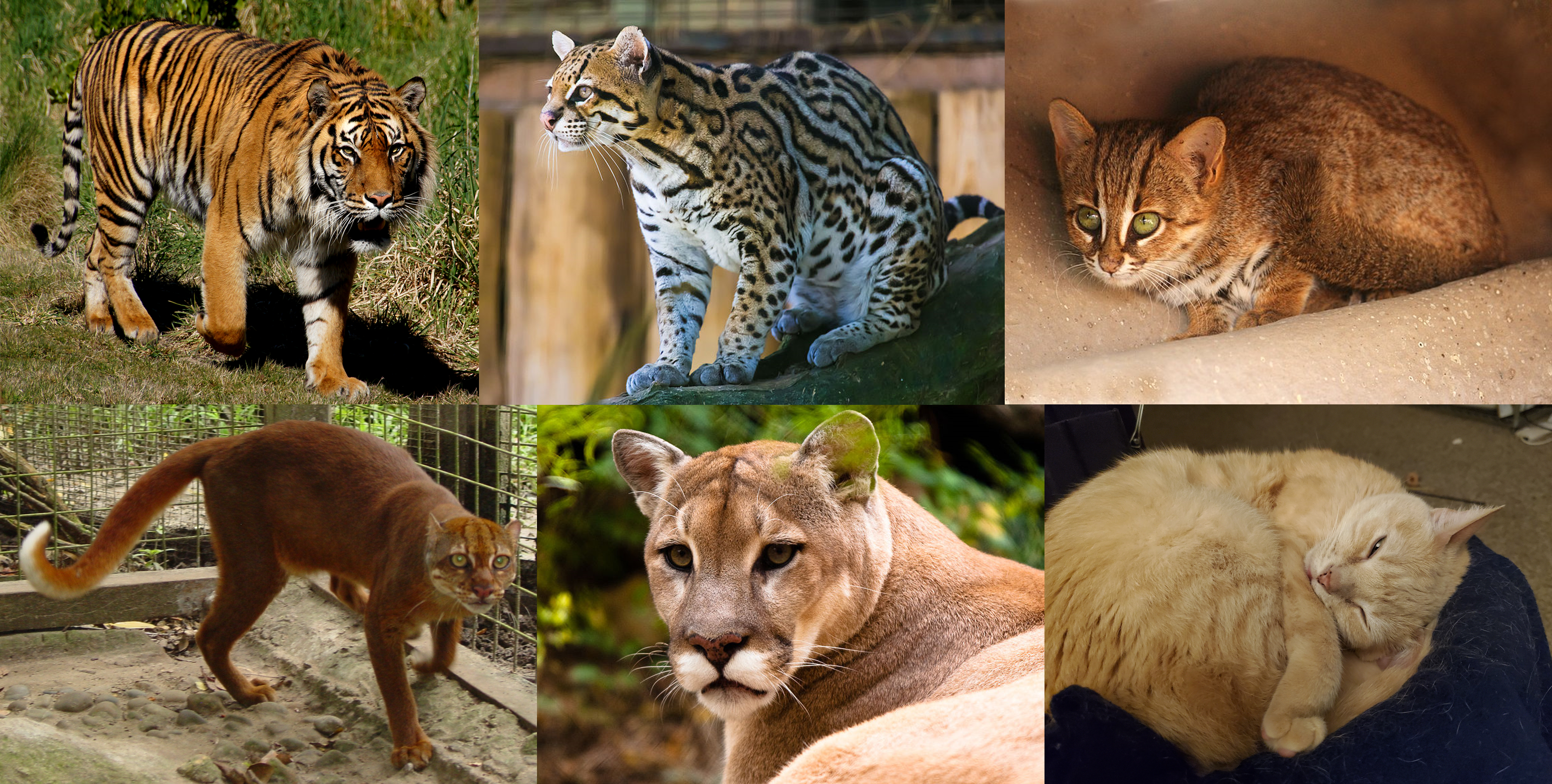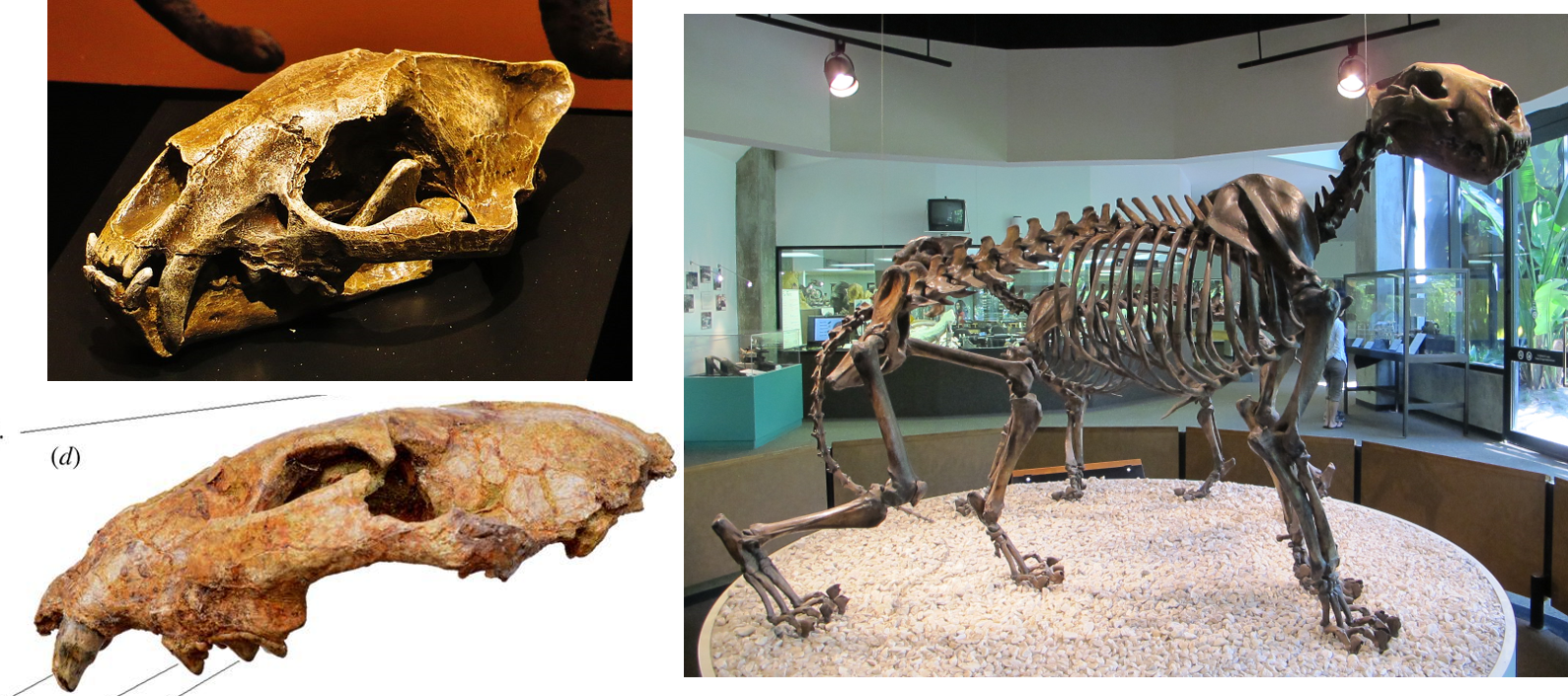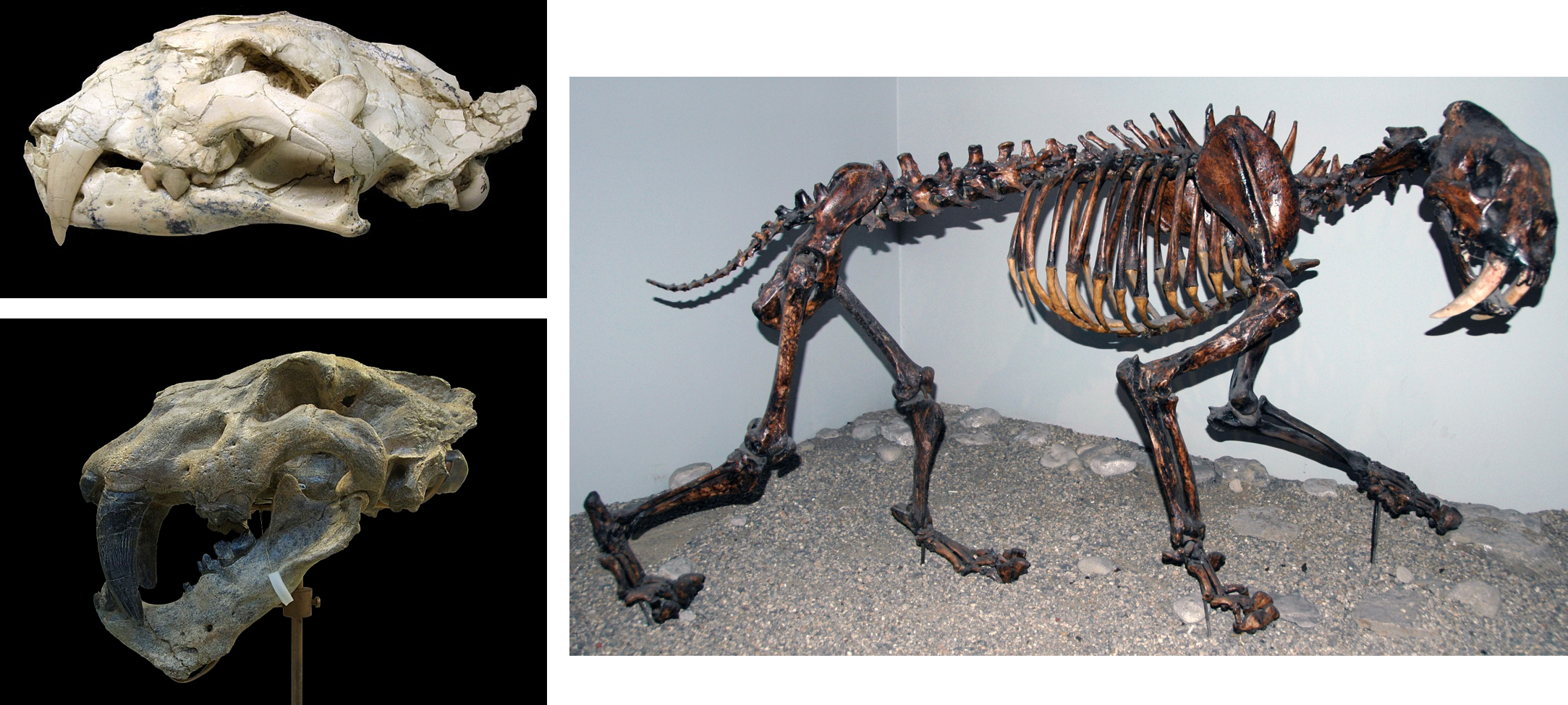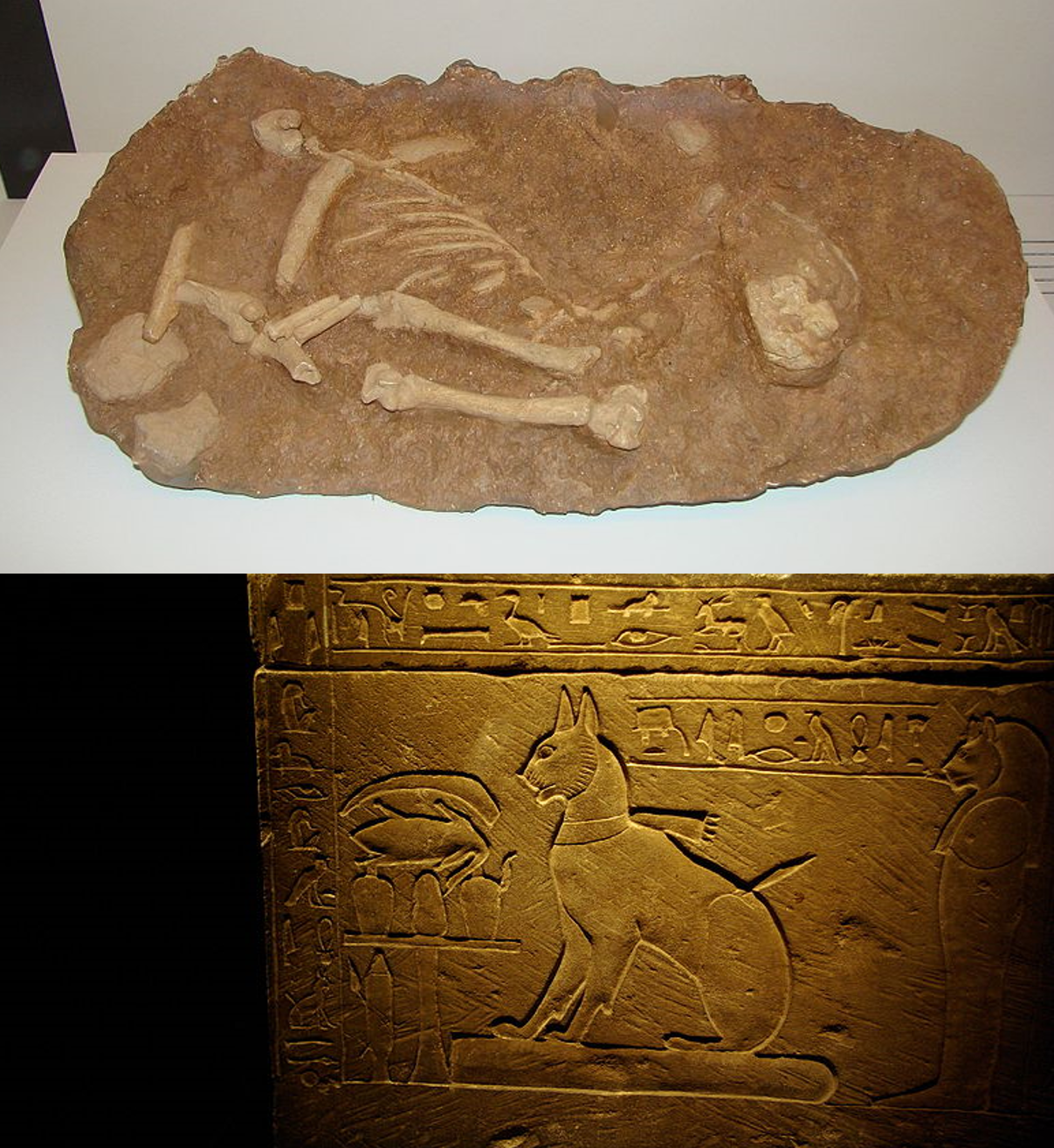Listen to Episode 93 on PodBean, Spotify, YouTube, or just search for it in your podcast app!
They got their start more than 20 million years ago, and today they’re among the most charismatic and successful mammals on Earth, from the African savannah to the Amazon rainforest to the many memes of the internet. This episode, we explore the diversity, evolution, and history of Cats.
In the news
New species of African crocodile is a clue to the origins of American crocs
New species of Eocene owl belongs to an ecologically diverse group of early owls
Giant pigeons of Fiji and the varying morphology of island birds
Snail-eating snakes dismember prey with “mandibular sawing”
Cats!
The animals we call cats – or felids – are mammals of the family Felidae. This group includes 38 recognized living species, from enormous tigers weighing over 300kg (660lbs) to tiny rusty-spotted cats that weigh only 1kg (2 lbs). These species are found in a variety of habitats in Africa, Asia, Europe, and the Americas, and of course domestic cats – household and feral – now live pretty much everywhere humans do.

Cats belong to the mammal order Carnivora alongside dogs, bears, hyenas, weasels, and more, and like most of their close cousins, cats are predators. They tend to be ambush hunters and hypercarnivorous, meaning they basically eat only meat, and their anatomy reflects this lifestyle.
Side-by-side with a dog (canid), cats’ physical adaptations are pretty obvious. Cats have shorter, stockier, flexible limbs that aren’t great for long-distance running (except that one species) but are excellent for climbing and grappling. Inside their paws are concealed claws that can be protracted for use, and inside their skulls are large canine teeth and sharp cheek teeth – cats are full of knives.

Fossil Felids
Cat-like carnivorans are found as fossils as far back as the Eocene, but paleontologists generally consider the oldest known felid to be Proailurus, an ancient animal from the Late Oligocene and Early Miocene (~30-20 million years ago) of Europe and Asia. About the size of a bobcat, Proailurus has most of the felid features we recognize, from its stocky legs to its flexible body to its short snout. By the Middle Miocene (~12 million years ago), later cats like Pseudaelurus have made it to all the familiar felid places: Europe, Asia, Africa, and North America (South America wasn’t yet available).
Most fossils of modern cat groups are from the last 4 million years or so, and the most famous of them are large species. The oldest pantherine (“big cat”), Panthera blytheae, was discovered in Tibet, while other big cats are known from African sites like Laetoli. Leopards, lions, jaguars, and more eventually spread across the world, giving rise to modern species as well as well-known ancient examples like cave lions, the enormous American lions, and the so-called American cheetah which might have evolved for speed in a case of convergent evolution.

Saber-toothed Success
Around the same time that early felids gave rise to modern cat groups, they also gave rise to one major subfamily (Machairodontinae) and a few other groups of saber-toothed cats.
These species took the typical felid trait of large canines to its extreme, developing knife-shaped canines that could be many centimeters long. The oldest saber-toothed felids are animals like Machairodus which later give rise to the scimitar-toothed cats (Homotheriini) and the dirk-toothed cats (Smilodontini). For much of felid history, saber-toothed cats have been as widespread, often moreso, than non-saber-toothed cats.

These are not the first saber-toothed predators! Non-cat saber-tooths include the Miocene Barbourofelids, close relatives of true cats; the so-called “false saber-toothed cats,” the Nimravidae of the Eocene and Oligocene; the saber-toothed marsupial Thylacoleo; and even some Permian non-mammal synapsids had similar teeth. Saber-toothed predators have evolved convergently over and over.
Clearly whatever they’re doing with these teeth is a winning strategy, and scientists have long puzzled over that very question. These days, most paleontologists suspect that saber-toothed cats were hunting similarly to living cats, chasing or ambushing prey, grappling it with their flexible arms, and delivering a killing bite to the neck or face – it would just be a particularly effective penetrating bite with saber-teeth.
Here Kitty, Kitty
By around 10,000 years ago, the living diversity of cats had become pretty much modern, but there was one last major change in store for felid evolution. Starting at least 9,000 years ago, one species of cat – genetic data points to the African wildcat – began a long journey toward domestication.

Compared with dogs, cattle, and horses, wild cats aren’t great candidates for domestication – they tend to be asocial, territorial, picky eaters (meat only), and without any natural tendencies to follow a leader. Instead of intentional domestication, researchers suspect that cats may have started living alongside humans while hunting the mice that were attracted to farming settlements. Over time, humans came to tolerate, then encourage, and eventually take in and fully domesticate cats.
However it happened, domestic cats have become one of the most widespread species on the planet. They’re also one of the most devastating invasive species on Earth. Recent research has estimated that domestic cats – feral, stray, and “outdoor” – are responsible for the deaths of billions of small wild animals yearly, as well as bearing partial responsibility for the extinctions of a number of species, particularly on islands. It’s not the kitties’ fault; we’re the ones who introduced some of nature’s greatest hunters to nearly every ecosystem on Earth, but it is a severe problem that conservationists worldwide are dedicated to addressing.
More Cats
The book Biology and Conservation of Wild Felids includes chapters on Phylogeny and Evolution and Form and Function of cats. [Technical]
Paleoartist Mauricio Antón writes frequently about ancient cats on his blog, Chasing Sabertooths.
The Taming of the Cat, the story of cat domestication.
To learn more about the impacts of cats on wildlife, check out the many links and references on the Wikipedia page Cat Predation on Wildlife.
—
If you enjoyed this topic and want more like it, check out these related episodes:
We also invite you to follow us on Twitter, Facebook, or Instagram, buy merch at our Zazzle store, join our Discord server, or consider supporting us with a one-time PayPal donation or on Patreon to get bonus recordings and other goodies!
Please feel free to contact us with comments, questions, or topic suggestions, and to rate and review us on iTunes!